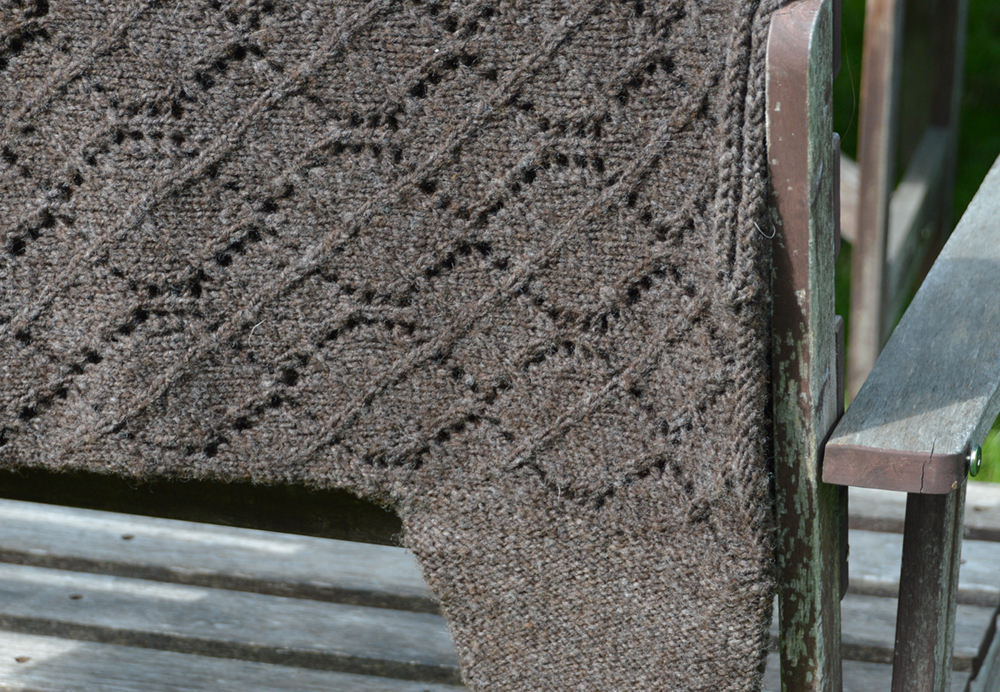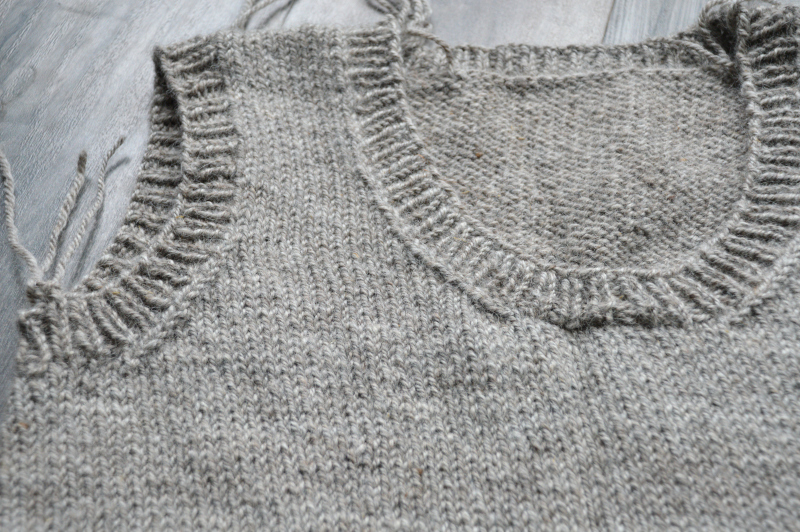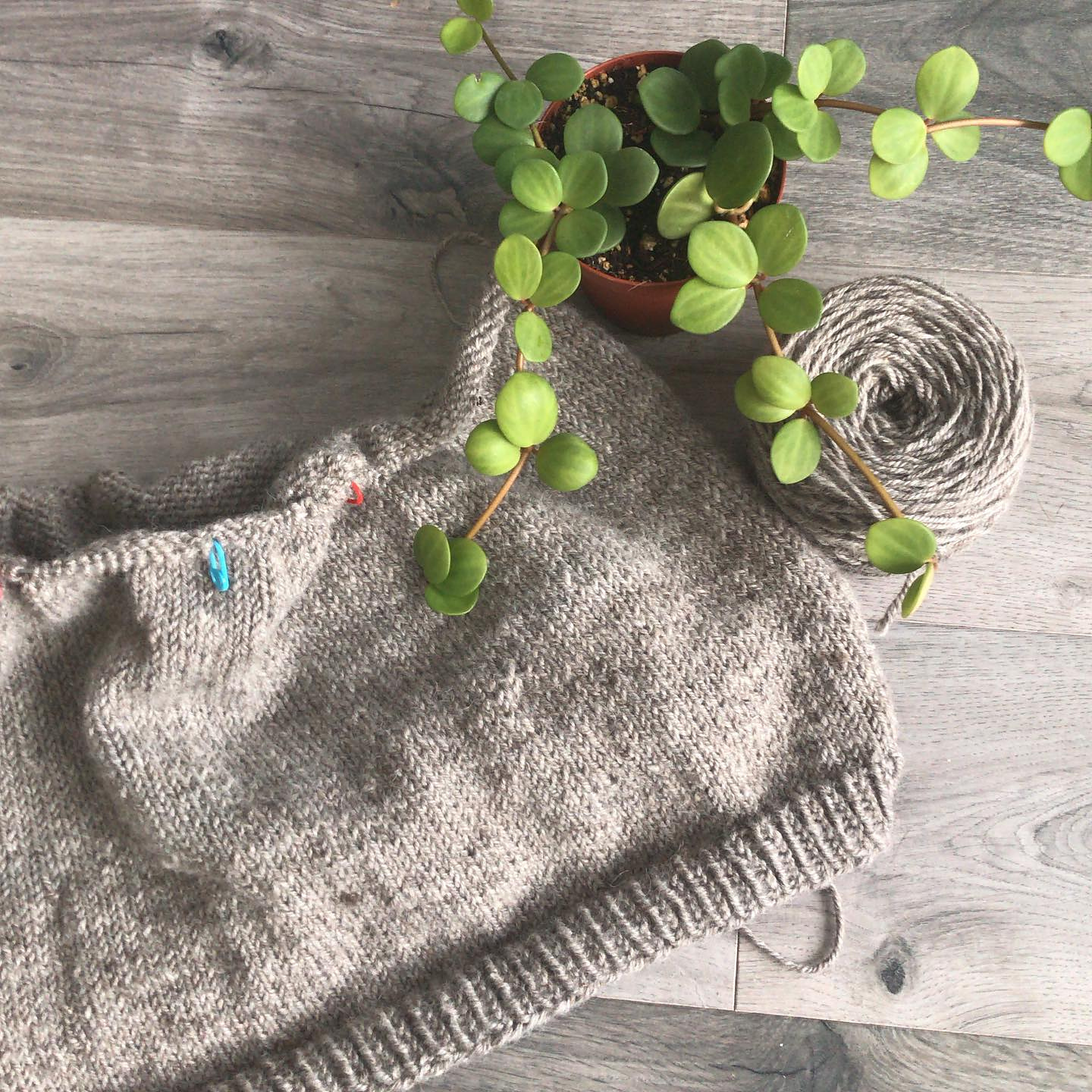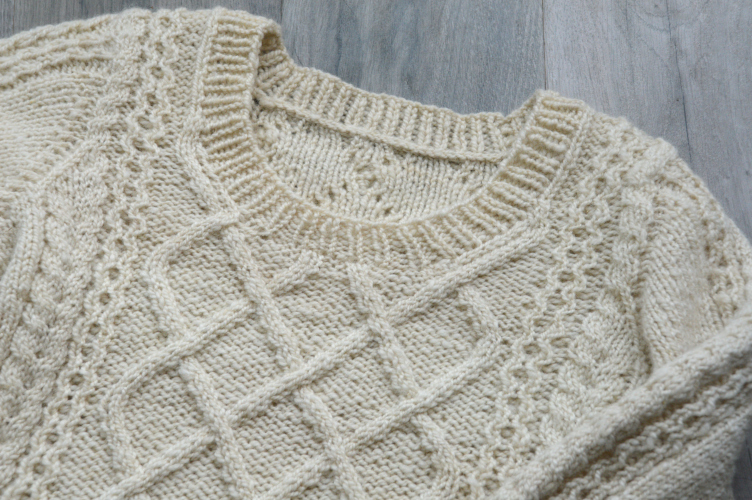In 2018 I decided to knit myself my first handspun sweater. The idea came about part way through the year, when I began to think of what I wanted my Tour de Fleece project to be. 2017 I had completed my first raw to finished project for Tour de Fleece (first time participating in the event too!), and I wanted to do the same again. But I knew I wanted to do something a bit more specific. Something a little different. Something that wasn’t my standard go-to spin (combed top and short forward draw), and something that would push my spinning.
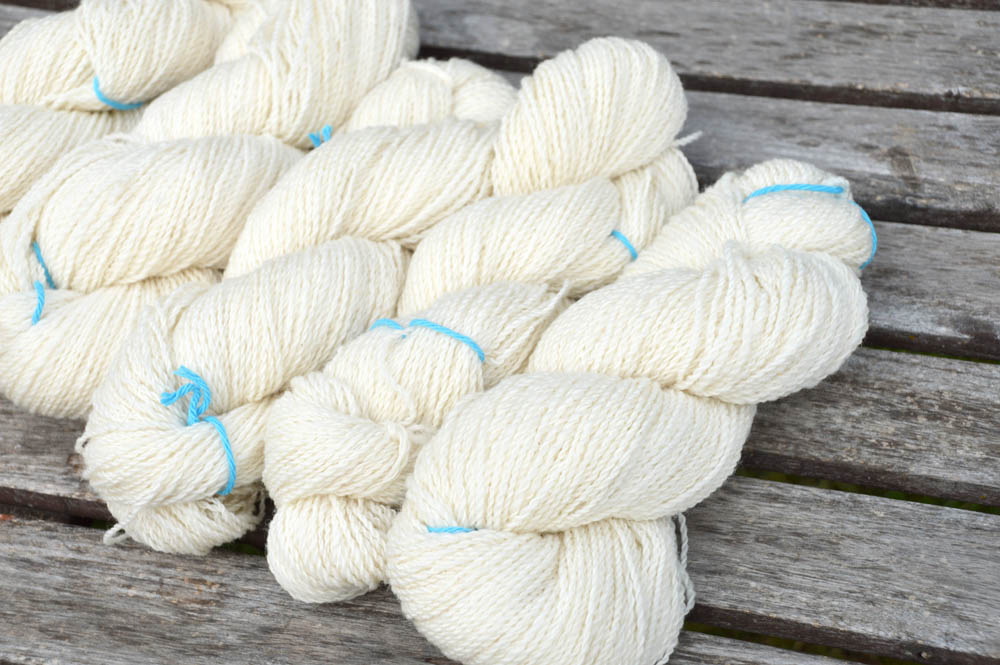
I ended up with 1221 yds of cushy, 2-ply fingering goodness in 2017. In fact, I still have that yarn, unknit, sitting in its hanks. I have plans for it this coming year, but I digress (don’t worry, I’ll update as that happens).
That Merino/Romney wasn’t spun with any specific intention behind it, I just picked up the fibre and went. That’s been my modus operandi for most of my spinning life – pick up the fibre and let the yarn come out – whatever that ends up being. The idea of labelling something a sweater spin was a little frightening to me.
Until I really sat down and thought about it.
I had spun, just the year before, 1221 yds of fingering weight yarn without any fuss, and that was a sweater quantity. Why did I get nervous simply because I labelled something a sweater spin? Obviously the idea of quantity didn’t bother me. It was the idea of creating a very specific yarn for a very specific purpose. But I have been spinning now for 10 (!!) years, I knew I had the skills required, so the only thing really stopping me was the phrase – sweater spin.
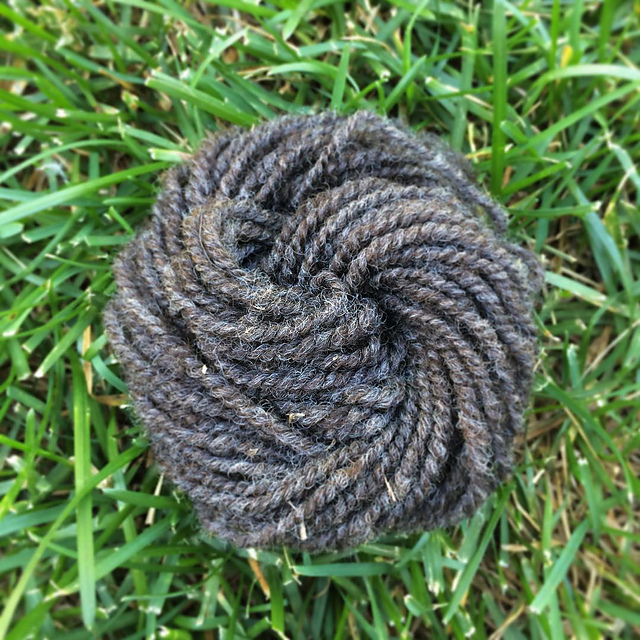
Tour de Fleece is all about challenging yourself, so overcoming that idea of a sweater spin seemed like a great way to start. The next thing was to find a sweater I wanted to spin for, and thankfully that had already presented itself. I had spotted Juniper by Ash Alberg when it came out in April of 2018 and I knew I that was the sweater.
The next step was to find a fibre. Thankfully I don’t have any want in that category thanks in part to this shop. I had picked up a lovely fleece from a farmer to the north east of me (along with several others), and the deep, gorgeous brown of Twilight’s fleece had sung to me immediately when I saw it. So I decided on his fibre to create this sweater.
Since Tour de Fleece was all about the challenge, I had also decided I didn’t want to fall back on my standard spin. My long draw was (and is) still a bit inconsistent for my liking, so I settled instead on giving short backward a try. I could control that draw a little easier, but still have the loft I was looking for in the finished yarn. I washed and prepped a bit of Twilight’s fleece, using my antique drum carder I had refurbished earlier in the year.
Then came the sampling. This is the most important step for a specific spin. Let me say that again: if you want to spin for a specific project, sampling your yarn first is the most important thing you can do. Take 10-20 grams of fibre, and spin how you think you should so you can get the method down. Once you’re happy with the finished yarn, you now have your template for how to continue on with your larger project.
For this spin, I spun a few samples, and settled on the one you see above. Juniper calls for a worsted weight yarn, which is not a normal weight for me to spin. Throw in the short backward (which due to the staple length of the fibre ended up being more of a hybrid between short/long draw), this was a yarn I struggled to achieve a bit at first. But I made notes, and I spun on the lowest ratio of my wheel (6.7:1). I then plied on the highest ratio to get that nice, tight twist. I’m a fan of a slightly overplied yarn, and because this pattern had cables I wanted to make sure I got some nice stitch definition.
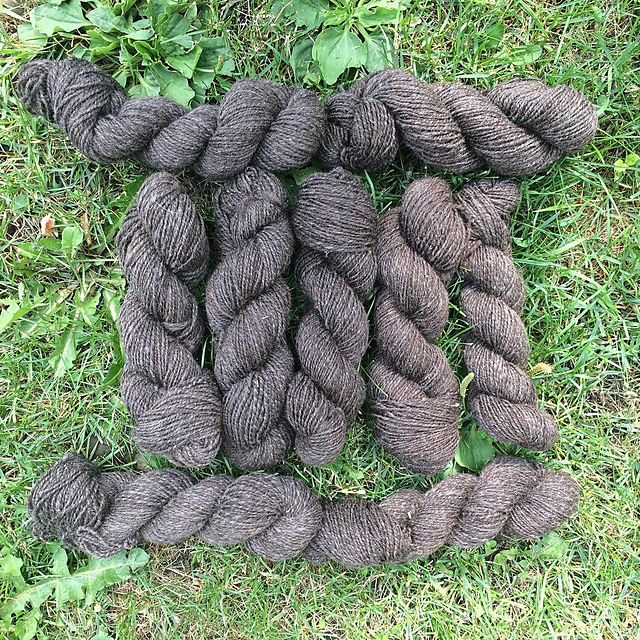
I stuck by my sample and finished up spinning all of Twilight’s fleece during Tour de Fleece 2018. To say I was incredibly happy with this yarn is an understatement. I had come into the project using a draw I wasn’t as comfortable with, spinning a weight that was more difficult for me, and the preconceptions I had just because I labelled it a sweater spin. During the few short weeks of Tour de Fleece I had demolished all of my doubts about spinning a project like this.
This project was a real game changer for me. It changed how I look at a fibre when I see it, and it’s made a serious impact in how I now spin. Spinning for a specific project has become a really valuable skill set, and it’s a new way of spinning that I plan to incorporate into more of my projects.
In my next post I’m going to talk a bit more about the nitty-gritty of spinning for a specific project, and how to start that process. I’m going to discuss sampling, picking a project before you spin, and spinning to a specific weight and type of yarn, so stay tuned!

